
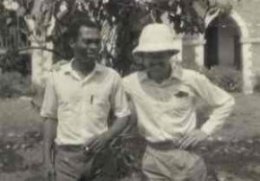 By Charlie Crooijmans
By Charlie Crooijmans
It's fascinating to see music alterations in community. Often these changes tend to be linked to sociopolitical or cost-effective motivations. Often a culture attempts to superimpose other cultures. Or occasionally music from other countries is a source of inspiration. It is never a one-way track, but rather back-and-forth, upside-down, and inside-out. In this essay John Collins could illuminate united states in regards to the origins therefore the channels of African rhythms. This might be a transcription (edited by Collins) of the lecture presented within World Blend on Summer 28, 2013, during the Jazz Days in Rotterdam. This World Blend transported the wise name: Bye Jazz, Hello World.
Mind you, that is an extended read with plenty of pictures and music.
Moderator Stan Rijven introduced John Collins as a Britisher having lived-in Ghana since the 1950s (now a naturalized Ghanaian) that is a writer, an archivist, a musician and has now already been a consultant for designers like Brian Eno, Mick Fleetwood, Ian Dury and Jamie Cato (One huge Leap). Collins played with Ghanaian and Nigerian bands/artists like the Jaguar Jokers, Kwaa Mensah, F. Kenya, Victor Uwaifo, Koo Nimo, the Bunzus, Atongo Zimba and T.O Jazz.
Within the 1970s he ran his Bokoor Band in Accra and in the 1980s to mid90s managed their Bokoor Studio that taped 200 bands and revealed 70 records. In 1990 he established the Bokoor Music Archives in Accra and it is at this time a Music Professor on University of Ghana and co-runs the area Dimension highlife band with Aaron Bebe Sukura.
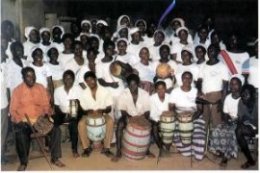 inside 1970s Collins caused Fela Anikulapo Kuti on a few events as well as on one of the slides he could be to be noticed using belated Fela in 1977 when he was asked to participate in Fela’s biographical motion picture The Black President in the role of colonial knowledge officer.
inside 1970s Collins caused Fela Anikulapo Kuti on a few events as well as on one of the slides he could be to be noticed using belated Fela in 1977 when he was asked to participate in Fela’s biographical motion picture The Black President in the role of colonial knowledge officer.
Actually, Collins has just been invited to talk on at the next Felabration in Lagos in October 2013 for the symposium in the part of Fela and Bob Marley for Ebony Mobilisation – Collins will chat on Fela, Nkrumah and also the Ghanaian Connection.
In Collins’ Jazz Day presentation he very first examined the parallels into the growth of Jazz and Ghanaian brass musical organization music – then relocated to the direct effect of Jazz on party musical organization Highlife.
Army gun music
Highlife songs started with brass band music. Essentially the West Africans hijacked European brass band songs and turned it in leisure songs called Adaha, which is an early on as a type of Highlife. Likewise Black Us americans performed the identical thing, they hijacked Western armed forces music to generate Jazz. In Ghana the British together with Dutch taught Africans to try out metal musical organization songs, in first they performedn’t desire Africans to play unique songs. They certainly were becoming brainwashed. Don’t forget that metal musical organization music is a military tool songs with bugles and drums used for communication in warfare. As much as about the 1880s which was the specific situation. Africans could play metal musical organization music, but only in European time.
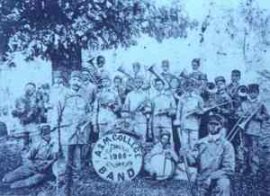 Then through the Ashanti conflicts of 1873 –1901 between 5, 000-7, 000 western Indians were stationed in Elmina and Cape Coast. The reason ended up being that Ghana was then the ‘white man’s grave’. Whenever British sent their particular soldiers to Kumasi, to beat the Ashanti folks many of them passed away of or got sick with malaria. Although British noticed that the black Caribbean troops didn’t perish. They performedn’t understand the explanation. Today we understand it’s the ‘sickle-cell’ effect. So you might say that the colonialists brought in tropicalized soldiers to help them to beat the Ashantis. That’s the bad side of the tale – the music consequence is more good.
Then through the Ashanti conflicts of 1873 –1901 between 5, 000-7, 000 western Indians were stationed in Elmina and Cape Coast. The reason ended up being that Ghana was then the ‘white man’s grave’. Whenever British sent their particular soldiers to Kumasi, to beat the Ashanti folks many of them passed away of or got sick with malaria. Although British noticed that the black Caribbean troops didn’t perish. They performedn’t understand the explanation. Today we understand it’s the ‘sickle-cell’ effect. So you might say that the colonialists brought in tropicalized soldiers to help them to beat the Ashantis. That’s the bad side of the tale – the music consequence is more good.
Early form of Calypso
The western Indian existence had been a benefit for Ghanaians, because of the rhythms while the music they introduced. They launched early kinds of Calypso, as well as brought the 5 pulse (3-2) claves or bell rhythm played in 4/4 time. Now this developed a sensation for Ghanaians, since this 5 pulse rhythm is not an African rhythm, it is a mutated African rhythm. The first African rhythm is a 6/8 polyrhythm. And you have the five pulse (grouped as 1, 2, 3- 1, 2) layered on the various numerous rhythms with this polyrhythmic construction.
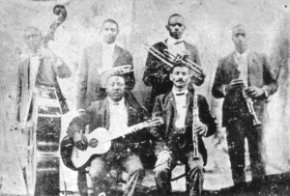 The whites slave masters when you look at the Americas were petrified by this rhythm because traditional African drums that played all of them. The drums can chat therefore ended up being regularly communicate and coordinate servant revolts (as with Haiti). Furthermore, polyrhythmic drum songs is spiritual and of ritual dance that may run the Ebony slaves up consistently from the whites. Therefore the Europeans and the whites Us citizens not just prohibited the chatting drums, but additionally sacred African polyrhythmic music.
The whites slave masters when you look at the Americas were petrified by this rhythm because traditional African drums that played all of them. The drums can chat therefore ended up being regularly communicate and coordinate servant revolts (as with Haiti). Furthermore, polyrhythmic drum songs is spiritual and of ritual dance that may run the Ebony slaves up consistently from the whites. Therefore the Europeans and the whites Us citizens not just prohibited the chatting drums, but additionally sacred African polyrhythmic music.
What exactly most Africans did in different elements of the Americas ( Cuba, Trinidad, Brazil, Jamaica) is they took the 5- pulse bell/claves and boxed it into or 4/4 (or 2/4) time. This was safe much like these you simply cannot boost up African Gods and be possessed. Of course if this safe rhythm returned on Ghanaians via western Indian they were really excited, even for though this rhythm wasn't polyrhythmic, it however had the syncopations and off-beats of African songs. So to start with the Ghanaians metal rings musicians were playing in strict European ‘oompa oompa’ time – but later modeled by themselves on Caribbean marching music featuring its syncopated Afro-Caribbean time.
Adaha and Highlife
Therefore the Ghanaian musicians for the coast started to play Caribbean rhythms and also Caribbean songs. This led to the development of an Africanized kind of metal band songs called Adaha in 1880s – the earliest illustration of what we today call ‘High-life’ – the name in fact being coined when you look at the 1920s whenever Adaha alongside road songs had been starting to be played by the ballroom dance orchestras associated with the regional elites and high-ups.
Within image we come across your artists tend to be wearing army uniforms, but they are perhaps not armed forces people. It was this is the uniform associated with songs. They was able to change military songs into leisure songs that had nothing in connection with warfare.
Music went inland
Local Adaha metal band songs was created inside coastal port towns of Cape Coast and Elmina. Then your songs moved inland, into the villages where it became indigenized. And this is a photograph of a village brass band.
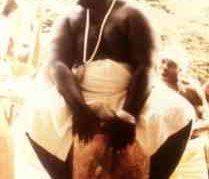
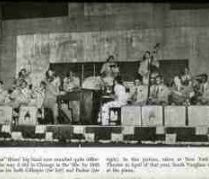
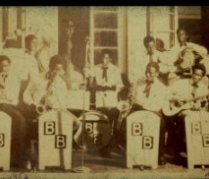
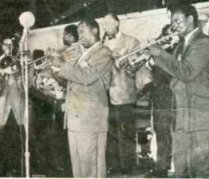
INTERESTING VIDEO










